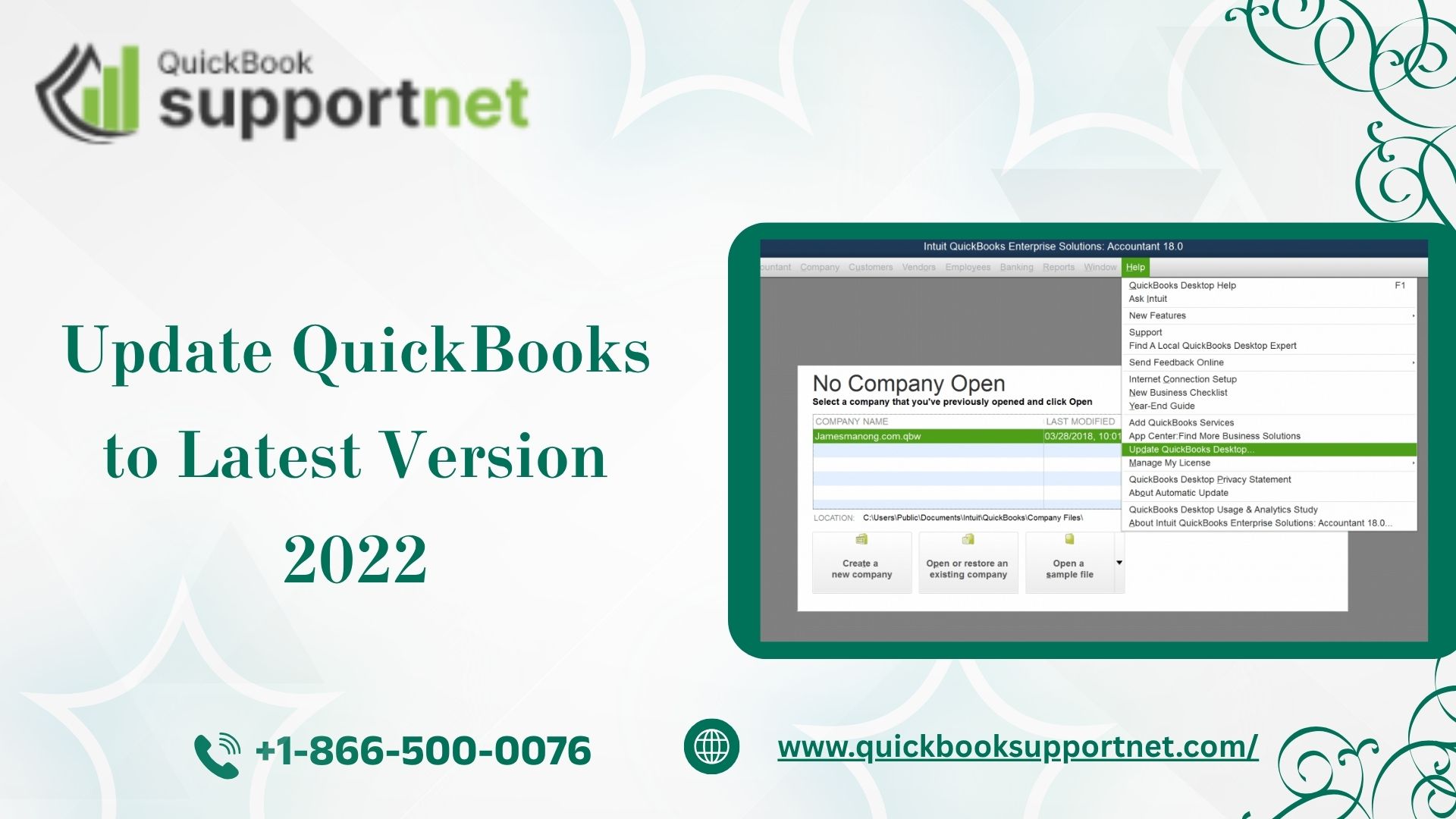Staying current with your accounting software is critical to ensuring security, compatibility, and optimal performance. If you’re running an older version of QuickBooks, you could be missing out on new features and important updates. That's why it's essential to Update QuickBooks Desktop to Latest Version 2022.
QuickBooks Desktop 2022 brings faster performance, automated features, and improved integration. With each new release, Intuit focuses on simplifying accounting workflows and fixing prior bugs. Therefore, updating to the latest version is more than just a recommendation—it’s a necessity for businesses seeking reliability and productivity.
Follow this step-by-step guide to Update QuickBooks to Latest Version 2022 and resolve common update errors efficiently. Call support at +1-866-500-0076 for expert help.
Read This Blog: Update QuickBooks to Latest Version 2022
Reasons to Update QuickBooks to 2022
Enhanced Features
Automated bill entry from vendor bills
Approval workflows for bills
Upload documents via mobile
Improved bank feed rules and match capabilities
Improved Speed & Performance
64-bit enhanced processing
Reduced loading time
More stable multi-user environment
Security Enhancements
Patches to vulnerabilities
Up-to-date compliance with the latest data protection protocols
Steps to Update QuickBooks to Latest Version 2022
Step 1: Prepare Your System
Ensure your PC meets the system requirements for QuickBooks Desktop 2022. Backup your company files and close all running applications.
Step 2: Check Current Version
Go to Help > About QuickBooks Desktop to view your current version. If it's not 2022, proceed to the next step.
Step 3: Use QuickBooks Update Feature
Open QuickBooks Desktop.
Click Help > Update QuickBooks Desktop.
Select the Update Now tab.
Choose Get Updates and wait for the update to complete.
Restart QuickBooks and install the updates when prompted.
Step 4: Manually Install Updates (If Auto Fails)
Visit the official QuickBooks Download & Update page.
Select your product and version.
Click Download, then run the setup file.
Errors You May Encounter While Updating
Sometimes, users experience issues during the update process. Here are a few common errors:
1. QuickBooks Update Error 15223 / 15270
These usually occur due to incorrect internet settings or outdated digital signatures.
2. Installation Freezes or Fails
This might be caused by system incompatibility, lack of admin rights, or antivirus interruptions.
3. Connection Errors
Firewall or antivirus programs may block QuickBooks from accessing the internet.
Read Also: Windows Firewall is Blocking QuickBooks
Common Causes Behind Update Errors
Misconfigured Internet Explorer settings
Damaged QuickBooks components
Windows not updated to latest version
Active security programs blocking installation
Partial installation or missing files
How to Fix QuickBooks Update Issues
Solution 1: Configure Internet Explorer Settings
Make sure TLS 1.2 is enabled under Internet Options > Advanced Settings.
Solution 2: Run QuickBooks Tool Hub
Download and install QuickBooks Tool Hub, go to the Program Problems tab, and select Quick Fix my Program.
Solution 3: Disable Antivirus/Firewall Temporarily
Sometimes, security software can interfere with the update process. Temporarily disable them and retry the update.
Solution 4: Use Clean Install Tool
If nothing works, perform a clean install using QuickBooks Clean Install Tool to remove residual installation files and re-install the software fresh.
How to Set Automatic Updates for Future Versions
To avoid manual updates in the future:
Go to Help > Update QuickBooks Desktop.
In the Options tab, select Yes for automatic updates.
Click Close to save settings.
Learn More: QuickBooks Cannot Communicate With the Company File
Final Thoughts
Updating your QuickBooks Desktop to the latest version not only enhances performance but also strengthens data security and compatibility. By keeping your software up to date, you ensure seamless accounting processes and compliance with modern standards.

